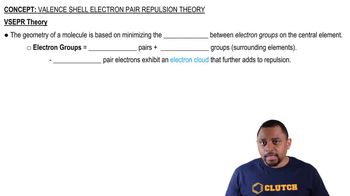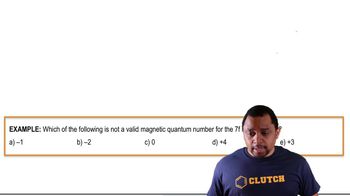Here are the essential concepts you must grasp in order to answer the question correctly.
Valence Bond Theory
Valence Bond Theory (VBT) explains how atoms bond by overlapping their atomic orbitals to form covalent bonds. In this theory, the shape and orientation of the orbitals determine the geometry of the molecule. For transition metal complexes, VBT also involves hybridization, where atomic orbitals mix to create new hybrid orbitals that can accommodate bonding with ligands.
Recommended video:
Valence Shell Electron Pair Repulsion Theory
Hybridization
Hybridization is the process of combining atomic orbitals to form new hybrid orbitals that are suitable for bonding. In the case of the complex [Ti(H2O)6]3+, titanium undergoes hybridization to form d2sp3 hybrid orbitals, which allows it to bond with six water molecules in an octahedral arrangement. Understanding the type of hybridization is crucial for predicting the geometry and bonding properties of the complex.
Recommended video:
Unpaired Electrons and Magnetic Properties
The presence of unpaired electrons in a metal ion's d-orbitals influences its magnetic properties and reactivity. In the case of [Ti(H2O)6]3+, the titanium ion has three unpaired electrons in its d-orbitals, which contributes to its paramagnetic nature. Identifying the number of unpaired electrons is essential for understanding the electronic structure and behavior of the complex in various chemical contexts.
Recommended video:





